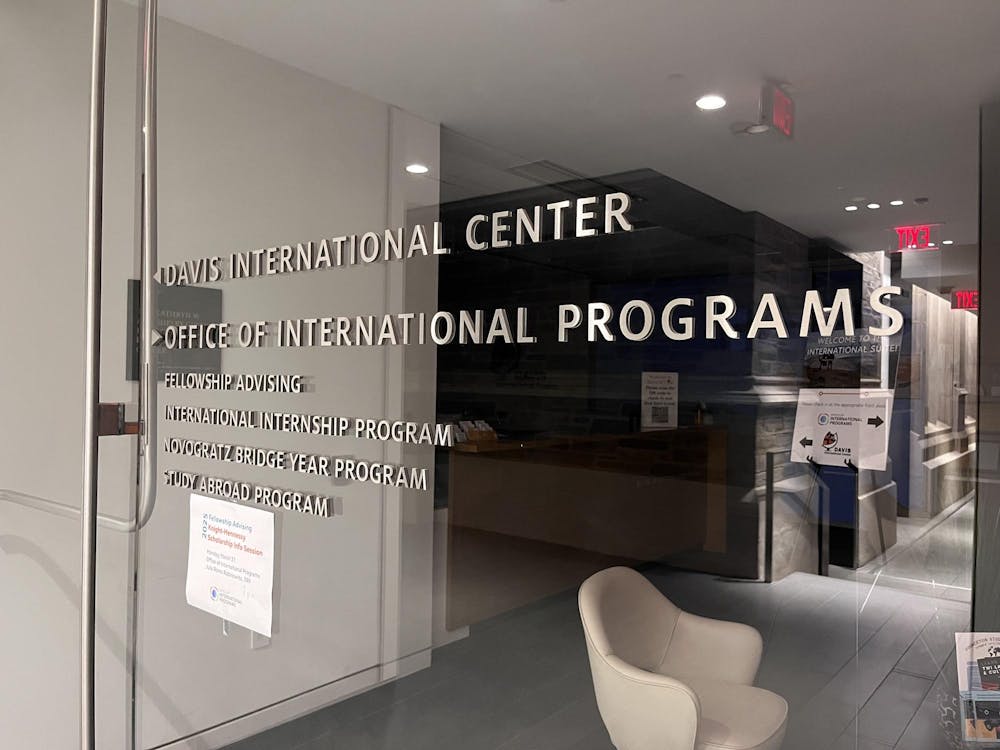Construction of the new neuroscience and psychology buildings will begin later this month, after financial concerns previously stalled the start of the projects, the University announced on Wednesday, March 17.
The University has now determined it has raised enough funds to begin construction, which is scheduled to run through 2013 and cost $180 million. The amount is significantly lower than previously expected, Executive Vice President Mark Burstein said.
Because construction costs are lower in the current economic downturn, “We expect that, actually, the total project budget will be as much as 20 percent less than if we had started construction two years ago,” Burstein explained, adding that officials had been meeting “once or twice a month” to discuss the project’s readiness.
When the University launched its $1.75 billion Aspire capital campaign in 2007, it set a fundraising goal of $300 million for “New Frontiers in Neuroscience,” one of its six campaign priorities.
Project funding will come jointly from the University’s capital campaign funds and other donations, Burstein said, though he declined to specify where the donations came from.
Jonathan Cohen, a psychology professor and co-director of the Princeton Neuroscience Institute, explained that the decision to move forward with the construction indicated the high level of importance the University placed on the project. “We were fully cognizant of the fact that we were up against forces that were well beyond any sort of interest or vision the University had,” he said. “We felt incredibly grateful and supported that it was not being put on hold indefinitely.”
Burstein said that the decision to begin construction was made roughly two weeks ago, once it was clear that the project had sufficient funding to be completed and that construction market conditions were favorable.
Last month, President Shirley Tilghman indicated that the project was “shovel-ready” at a meeting of the Council of the Princeton University Community.

The construction of a permanent home for the neuroscience institute, which opened in 2005, has long been one of Tilghman’s stated priorities, and the University announced its plans to build one in 2006. Last summer, Tilghman told The Daily Princetonian that she considered the construction of the neuroscience building a “must” before 2013.
The two-building, 248,000-square-foot complex will be located south of Icahn Laboratory on the current site of Lot 20, next to Roberts Stadium. It will house the neuroscience institute in one building and the psychology department in the other.
The neuroscience institute has been temporarily located alongside the molecular biology department in Thomas, Moffett and Schultz laboratories, while the psychology department is currently housed in Green Hall.
David Tank, a molecular biology professor and co-director of the neuroscience institute, said that bringing all members of the institute into one building — and connecting it to the space occupied by the psychology department — was a vital move. “The Princeton Neuroscience Institute is an institute on paper, but it [currently] doesn’t really have a physical home where all the faculty in it can be in proximity to each other,” he explained. “I’m in Icahn, my colleagues ... are in Moffett and Schultz and Lewis Thomas, and then going up the street to Green Hall.”

“What this building allows us to do is basically come together under one roof and share both facilities for experiments and also have our graduate students and postdocs be in proximity [to each other],” he added.
Cohen voiced a similar sentiment, explaining that the joint space would substantially improve opportunities for collaboration. “[Now,] we’re holding seminars together, we’re teaching courses together, sharing students, but it’s still very hard,” he said. “We’re working against the grain when you have that much distance.”
He noted that the University’s commitment to constructing the complex, at Tilghman’s urging, was impressive. “It was a bold and visionary move, but not necessarily an easy one logistically and financially, for the University to commit to moving psychology down [campus], and to build space for psychology along with the neuroscience program,” he said.
Both Tank and Cohen noted that the increased amount of facilities dedicated to neuroscience should promote the institute’s future growth. “Because we will have space in the new building that is roughly double the space that the current neuroscience faculty would use, we have room for expansion, meaning we can potentially hire new faculty members to be part of the neuroscience faculty and help us expand the courses that are offered, and the training at both the undergraduate and graduate level,” Tank explained.
Burstein explained that building sizes and other major structural elements have been finalized for roughly one year, but that some design details are still being refined. Madrid-based firm Jose Rafael Moneo Valles Arquitecto and New York-based Davis Brody Bond have overseen the design process for the new buildings for the past three years.
The molecular biology department is expected to continue using Thomas, Moffett and Schultz laboratories once the neuroscience institute moves out. Green Hall will likely be converted to house various social science and humanities programs once the psychology department moves to the new complex.







